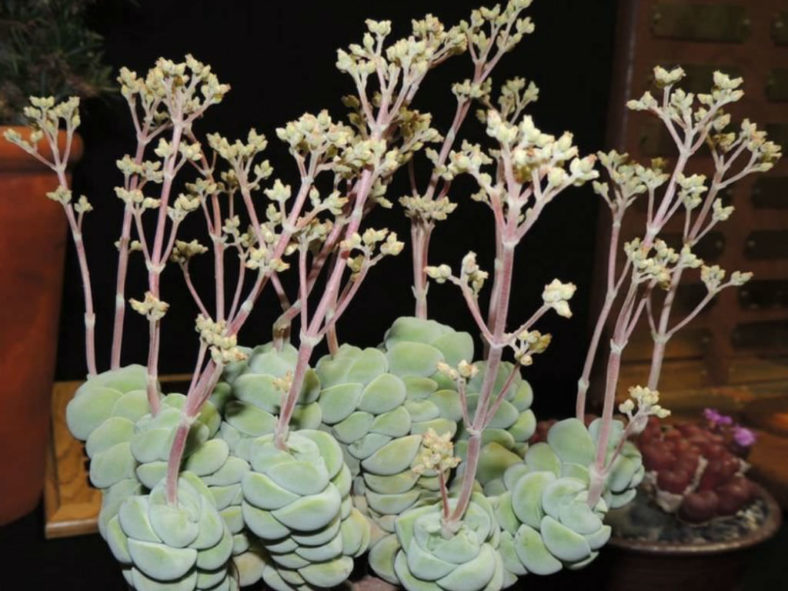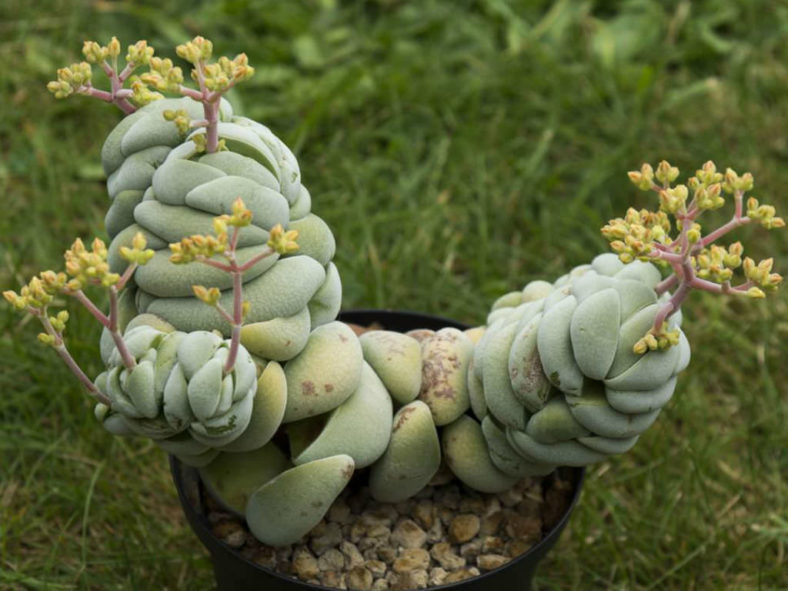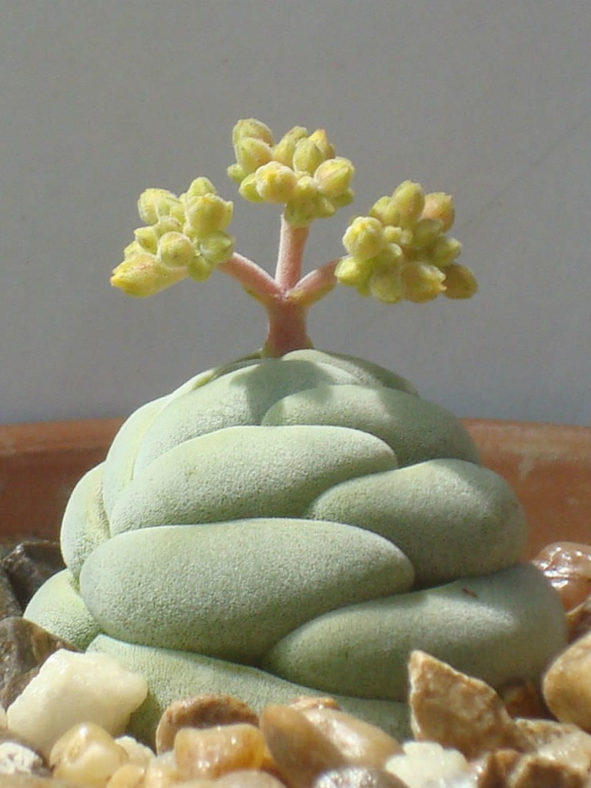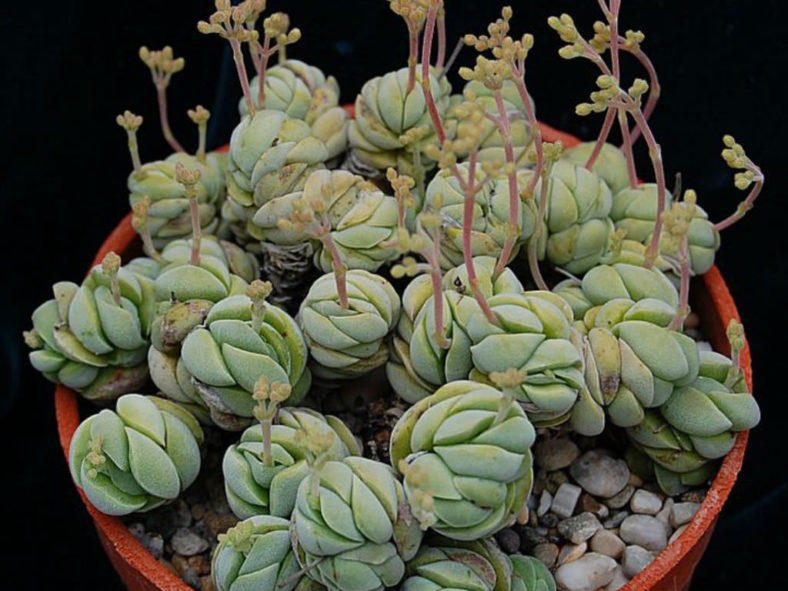Scientific Name
Crassula alstonii Marloth
Scientific Classification
Family: Crassulaceae
Subfamily: Crassuloideae
Genus: Crassula
Etymology
The specific epithet "alstonii" (pronounced "al-STON-ee-eye") honors Edward Garwood Alston (1862-1934), a farm manager and plant collector in the Northern Cape province of South Africa. He sent plants, including this species, to Peter MacOwan and Selmar Schönland.
Origin
Crassula alstonii is native to South Africa. It grows on gentle slopes or flats among quartzitic or gneissic gravel from Lekkersing to Komaggas in the Northern Cape province.
Description
Crassula alstonii is a beautiful, dwarf succulent with short stems completely covered with grey-green, velvety, closely adpressed leaves, forming an almost spherical rosette. It can grow up to 1.6 inches (4 cm) tall, one-stemmed or sparingly branched from the base. The rosettes can reach a diameter of 2 inches (5 cm). The leaves are orbicular to broadly obovate, flat above, and slightly swollen below. They can measure up to 0.6 inches (1.5 cm) in length and 0.9 inches (2.2 cm) in width.
The flowers are tubular, cream to pale yellow, becoming brown, and appear in the fall. The inflorescence is a rounded but often irregularly branched thyrse with a peduncle covered with recurved hairs. The peduncle can grow up to 1.6 inches (4 cm) long. This species is monocarpic, which means the rosette dies after blooming.

Hybrids of Crassula alstonii
How to Grow and Care for Crassula alstonii
Hardiness: USDA hardiness zones 10a to 11b: from 30°F (-1.1°C) to 50°F (10°C).
Crassulas are easy to grow but susceptible to mealybugs and fungal diseases. As with all succulents, overwatering is sure to be fatal, so err on the side of too dry rather than too wet. Never let your plant sit in water. If you water from beneath by allowing the plant to sit in a saucer of water, make sure to pour off any excess water after a few minutes.
These succulents are generally started by division, offsets, or leaf cuttings. Crassulas can be easily propagated from a single leaf. Sprout leaves by placing them into a potting mix for succulents, then cover the dish until they sprout.
Repot as needed, preferably during the warm season. To repot your Crassula, ensure the soil is dry before repotting, then gently remove the pot. Knock away the old soil from the roots, removing any rotted or dead roots. Treat any cuts with a fungicide. Place the plant in its new pot and backfill it with potting soil, spreading the roots as you repot. Leave the plant dry for a week or so, then begin to water lightly to reduce the risk of root rot.
Learn more at How to Grow and Care for Crassula.
Links
- Back to genus Crassula
- Succupedia: Browse succulents by Scientific Name, Common Name, Genus, Family, USDA Hardiness Zone, Origin, or cacti by Genus
Photo Gallery
Click on a photo to see a larger version.


